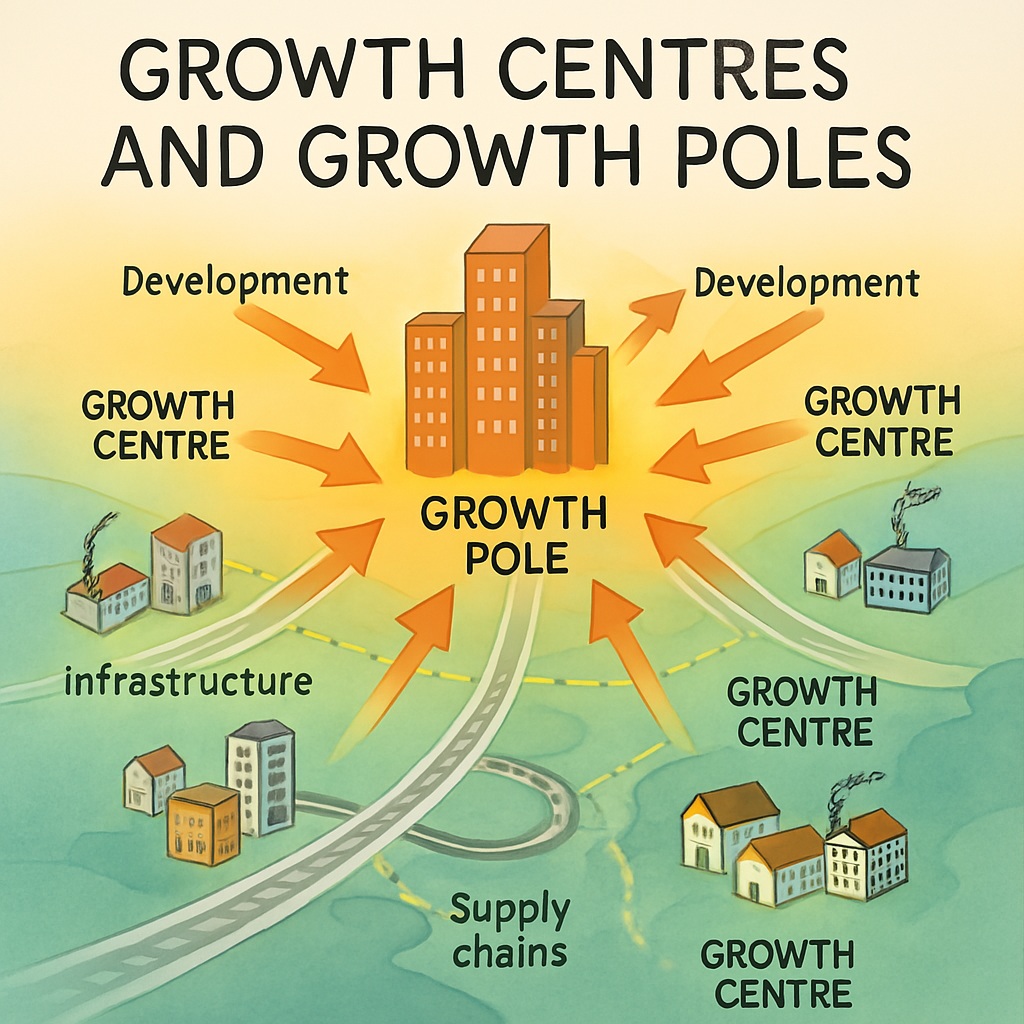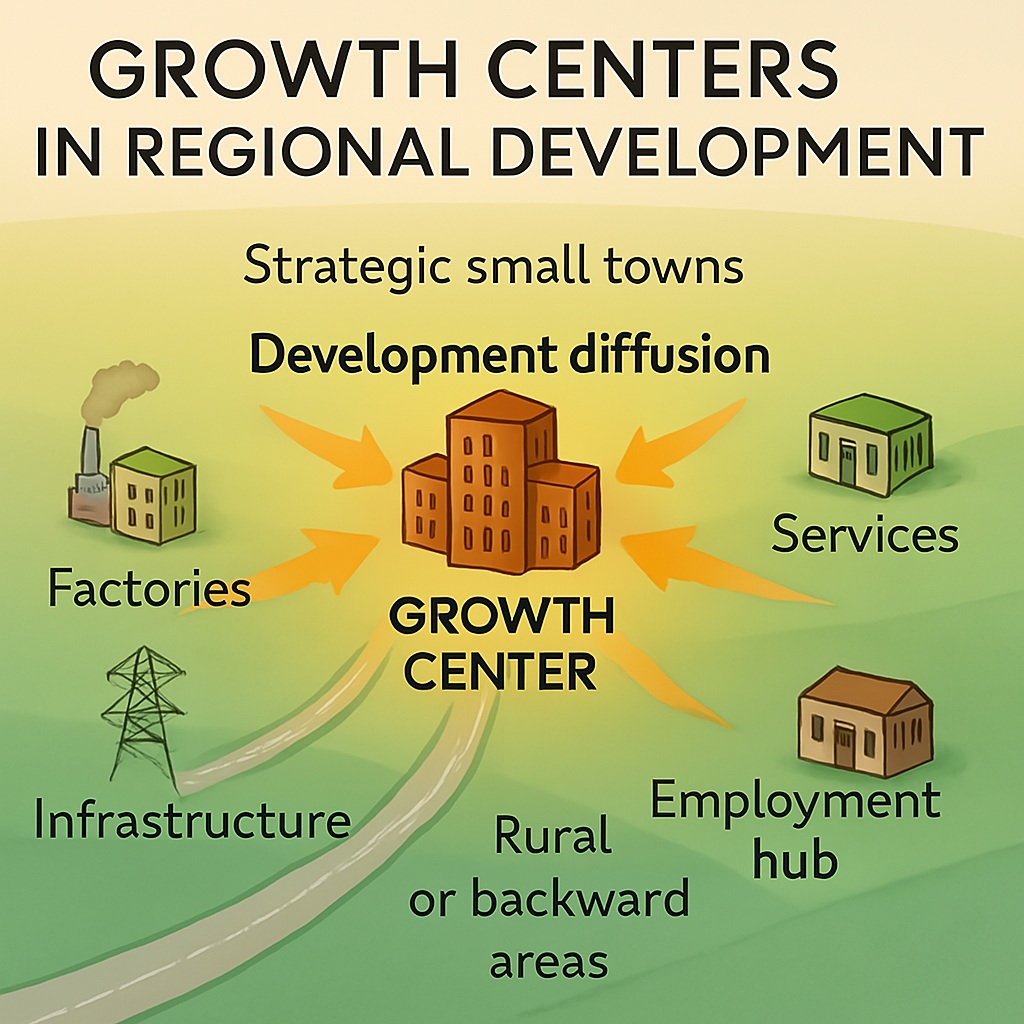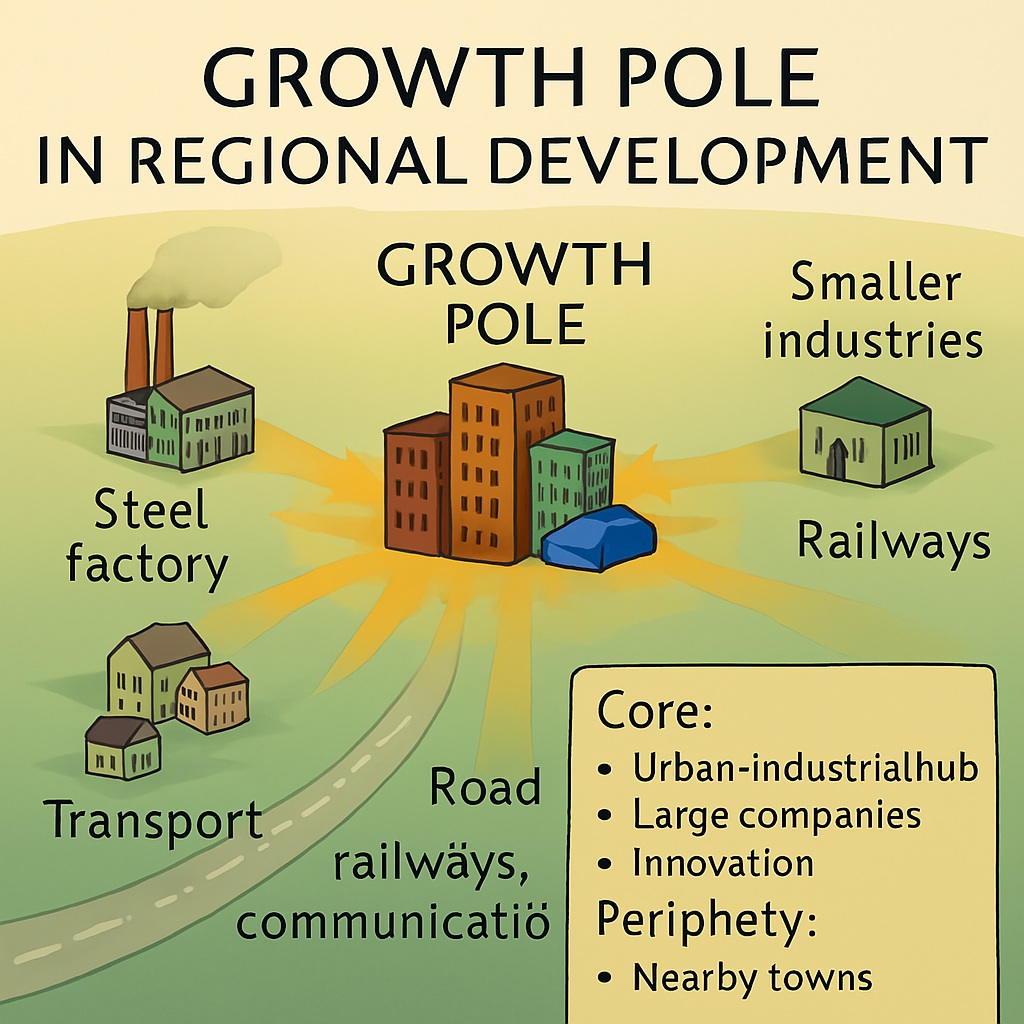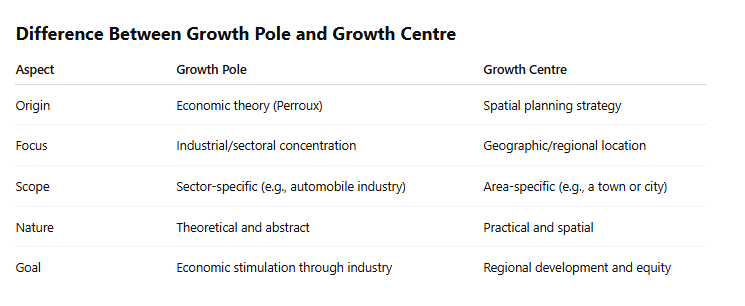Growth centers and growth poles are concepts in economic geography that refer to strategies for regional development. In this article, we will explore the definitions and characteristics of growth centers and growth poles and their significance in economic development.

Table of Contents
Growth Centers
Growth centers refer to a strategy of regional development that involves the concentration of economic activities in specific areas. Growth centers typically have a high level of infrastructure, including transportation networks, communication facilities, and social amenities. The aim of growth centers is to stimulate economic growth and development in surrounding areas by providing a focus for investment, innovation, and development. Growth centers can be established in urban or rural areas and can be single or multiple in number.

Growth Poles
Growth poles are a similar strategy to growth centers but involve the concentration of economic activities in a particular industry or sector. Growth poles are typically characterized by a high level of specialization and expertise in a particular industry, such as technology or manufacturing. The aim of growth poles is to stimulate economic growth and development in surrounding areas by attracting investment, generating employment opportunities, and fostering innovation.

Characteristics of Growth Centers and Growth Poles
Both growth centers and growth poles have several common characteristics.
- They are centers of economic activity: Both growth centers and growth poles are characterized by a high level of economic activity, including manufacturing, trade, and service provision.
- They are designed to stimulate economic growth: The primary goal of both growth centers and growth poles is to stimulate economic growth in surrounding areas by attracting investment, generating employment opportunities, and fostering innovation.
- They require significant investment: The establishment of growth centers and growth poles typically requires significant investment in infrastructure, technology, and human capital.
- They have positive externalities: Both growth centers and growth poles can generate positive externalities, such as increased productivity, knowledge spillovers, and enhanced quality of life.
- They require a supportive policy framework: The establishment of growth centers and growth poles requires a supportive policy framework, including policies that promote innovation, investment, and entrepreneurship.
Difference Between Growth Pole and Growth Centre

In conclusion, growth centers and growth poles are concepts in economic geography that refer to strategies for regional development. Growth centers involve the concentration of economic activities in specific areas, while growth poles involve the concentration of economic activities in a particular industry or sector. Both growth centers and growth poles require significant investment and a supportive policy framework to stimulate economic growth and development in surrounding areas. The study of growth centers and growth poles is critical to understanding regional development and promoting economic growth and development.
Read: Geography Notes